
Ha Noi’s Bat Trang pottery village bustling ahead of Lunar New Year
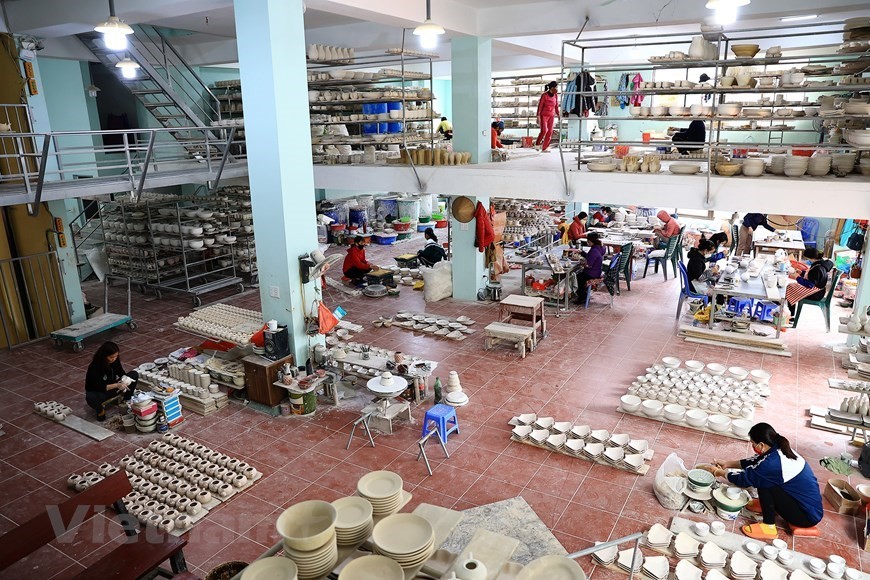 |
| Bat Trang pottery village was formed more than 500 years ago. Going through many ups and downs, but now its ceramic products are still appreciated for their quality with many designs, models and types. As the Lunar New Year – the Year of the Tiger - is approaching, Bat Trang village is busy churning out various products to serve consumers. Bat Trang is well-known for the traditional pottery trade. There are approximately 200 enterprises and 1,000 households who produce and trade ceramic wares here, with the products exported to many countries such as Japan, the Republic of Korea, Thailand, Russia, Italy, and France. (Photo: VietnamPlus) |
 |
| Each stage in the process of creating products is made meticulously and carefully by potters with the desire to bring products that are both durable and beautiful to celebrate Tet. In Viet Nam, the first pieces of ceramics were created around 7,000 – 8,000 years ago and pottery became popular in daily life about 4,000 years ago, according to Nguyen Quoc Binh from the Vietnam National Museum of History. Pottery peaked during the 15th – 17th centuries when many craftsmen were capable of performing sophisticated techniques in making ceramics. Hai Duong’s Chu Dau became the country’s largest pottery hub at that time, where ceramics were also made for export. Viet Nam was one of the world’s leading ceramics exporters during the period. (Photo: VietnamPlus) |
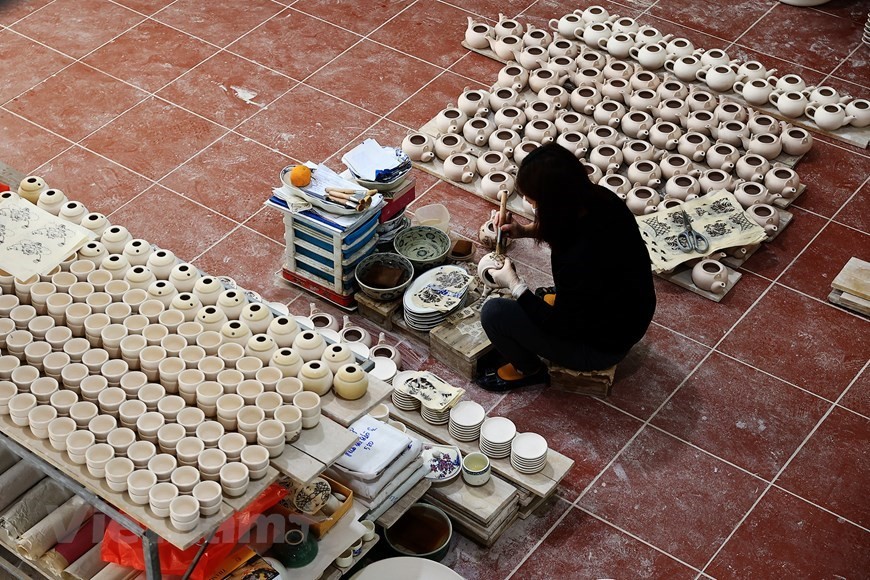 |
| At the end of the year, the demand for goods is higher, so households in Bat Trang trade village are rushing to prepare for the last shipments of the year. Household ceramics, worship items, art ceramics, and decorative ceramics in Bat Trang are present in all localities nationwide and exported to other countries. In Viet Nam, pottery peaked during the 15th – 17th centuries when trade activities between Viet Nam and foreign countries developed robustly, and Vietnamese ceramics were also made for export to Southeast, Eastern and Western Asian countries. However, between the 17th – 18th centuries, Viet Nam’s pottery lost its foothold in Europe and Japan. Many pottery hubs have disappeared since then, but Ha Noi’s Bat Trang remains. (Photo: VietnamPlus) |
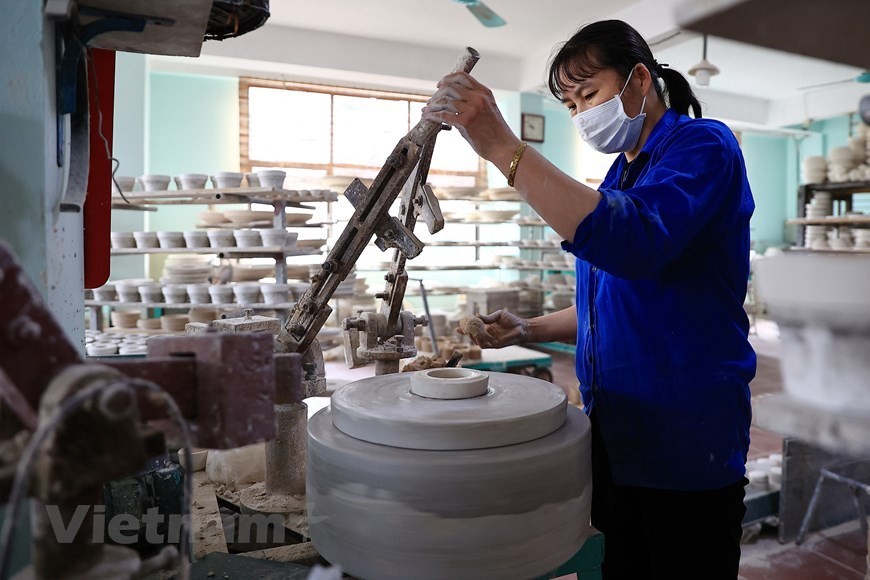 |
| At present, most of the local ceramic factories have used machines to save time and increase productivity. The ceramic production process includes the following steps: preparation of raw materials; product shaping; product drying; product repair; decoration, drawing; enameling and firing. Bat Trang pottery village is located on the left bank of the Red River in outlying Gia Lam district, about 15 km from downtown Ha Noi. This is the oldest and most famous pottery village in Viet Nam, attracting the attention of many domestic and foreign tourists before the COVID-19 broke out. Time passed, but Bat Trang ceramic and pottery products always maintain traditional characteristics. (Photo: VietnamPlus) |
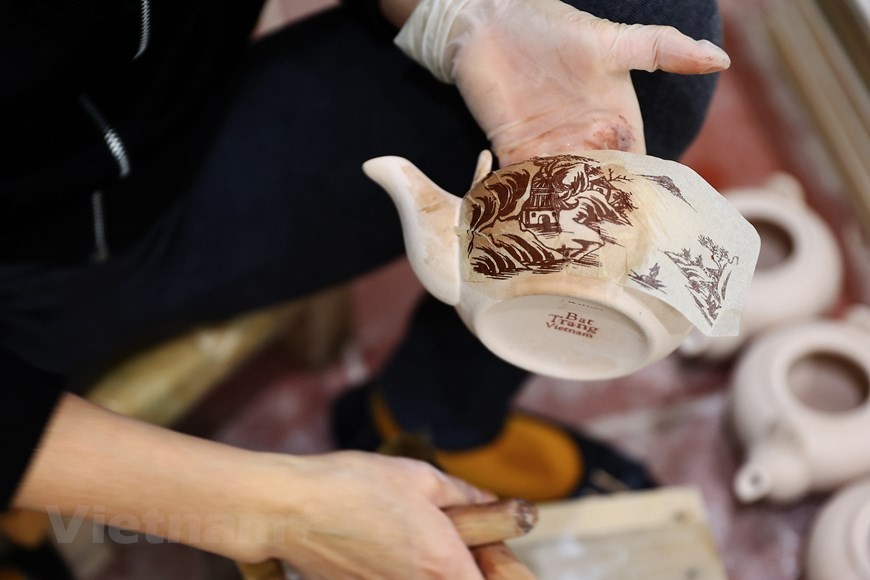 |
| Patterns on this product are printed on paper, and potters only need to apply a thin layer of water to produce eye-catching patterns that still retain the 'soul' after firing. The kilns during the last months of the year are always operating at full capacity. On average, each batch of household ceramics is fired for 17 hours. Depending on each type of kiln and each specific type of ceramics, the firing time and firing temperature are also different. Bat Trang has long been well-known for the traditional pottery trade. Its ceramic products are appreciated for their quality with many designs, models and types. (Photo: VietnamPlus) |
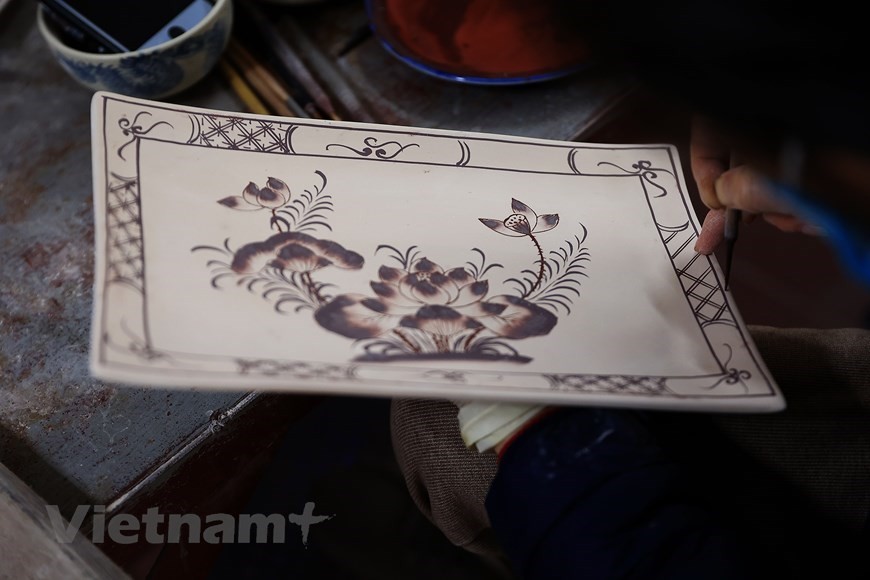 |
| The patterns seem simple but require the potter to have perseverance and skillful hands. Each stage in the process of creating products is made meticulously and carefully by potters with the desire to bring both durable and beautiful products to consumers. In recent years, Bat Trang pottery village has been an attractive destination for visitors to Ha Noi. There are many places to visit in Bat Trang, old houses like the one owned by artisan To Thanh Son, Tieu Dao Pagoda, Bo Bat old kiln, Kim Truc Pagoda, Giang Cao Temple and Mother Goddesses Temple. Apart from these relics, the core of Bat Trang commune is 23 traditional houses, 16 family temples and many old kilns, all built with Bat Trang bricks. |
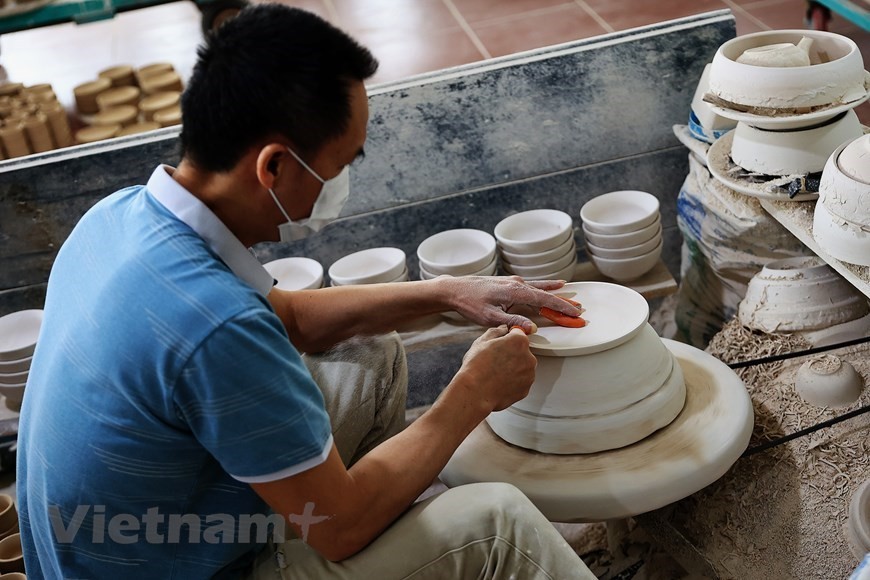 |
| The owner of Tan Long ceramics factory says: "This whole year, the number of orders has decreased compared to those of previous years, but orders have remained stable like last year". Apart from familiar customers, the establishment also welcomes new customers in different provinces with the need to order products to sell online. (Photo: VietnamPlus) |
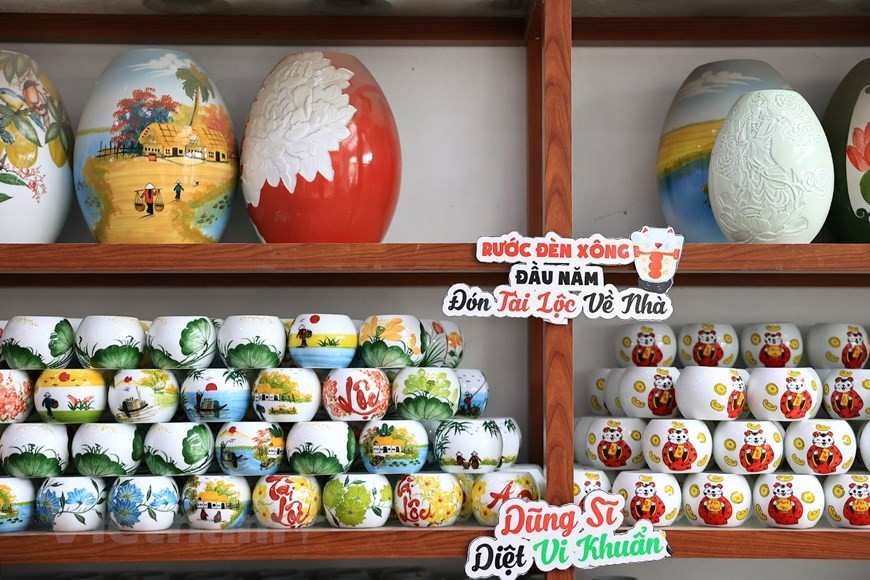 |
| Finished products are brought to the booths for display to introduce to customers. There are many other products, especially household appliances that are also "dressed" with the characteristics of Tet such as fortune flower vases, dishes painted with apricot flowers, beautiful boxes of Tet jams. This year, the lunar New Year holiday falls in late January and early February. Tet is the biggest and most important festival for Vietnamese people. As the Lunar New Year is nearing, residents in Bat Trang pottery village in the outlying Gia Lam district of Hanoi capital city are busy preparing products to supply the Tet market. (Photo: VietnamPlus) |






